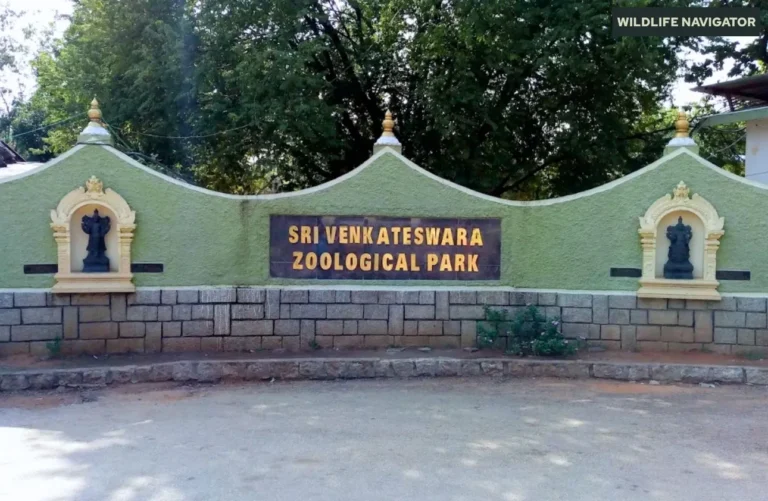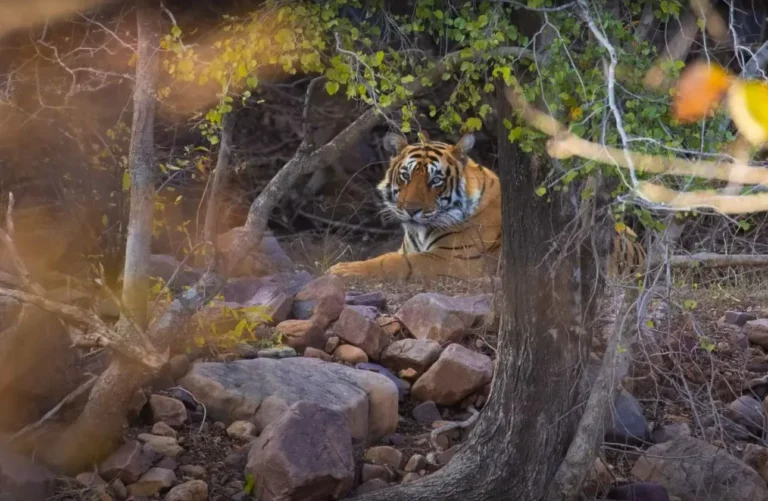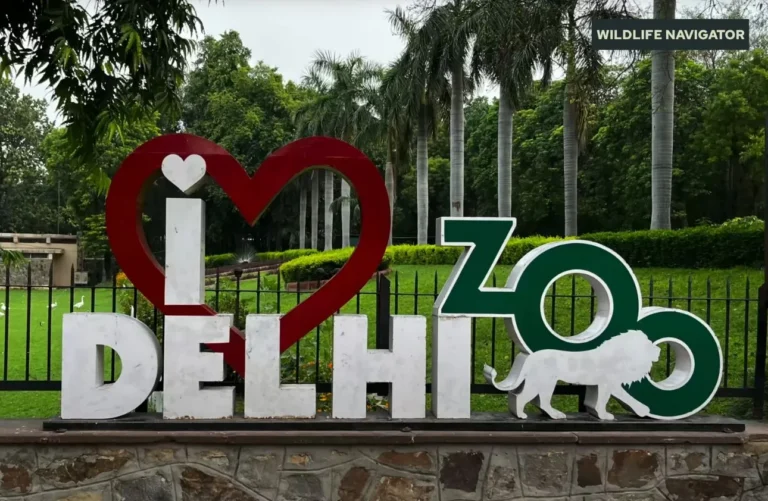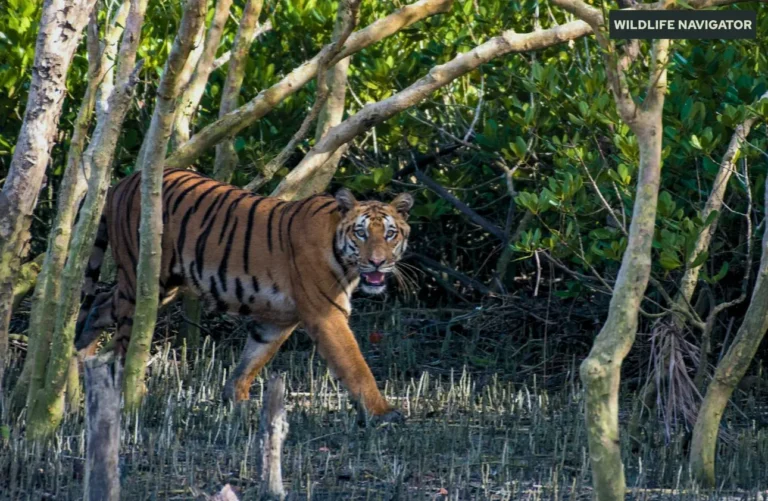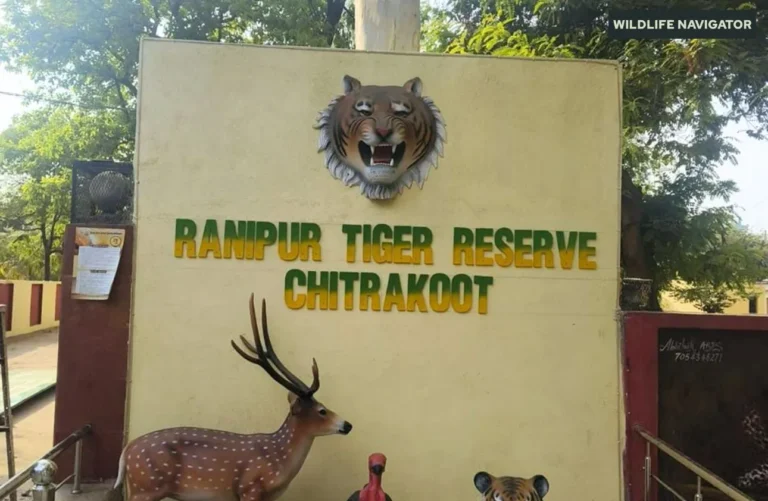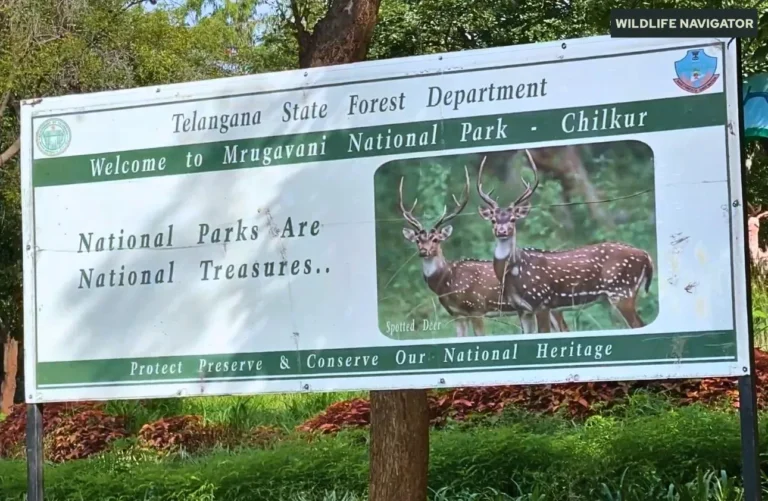Kali Tiger Reserve: Explore Karnataka’s Wildlife, Flora, and Adventure
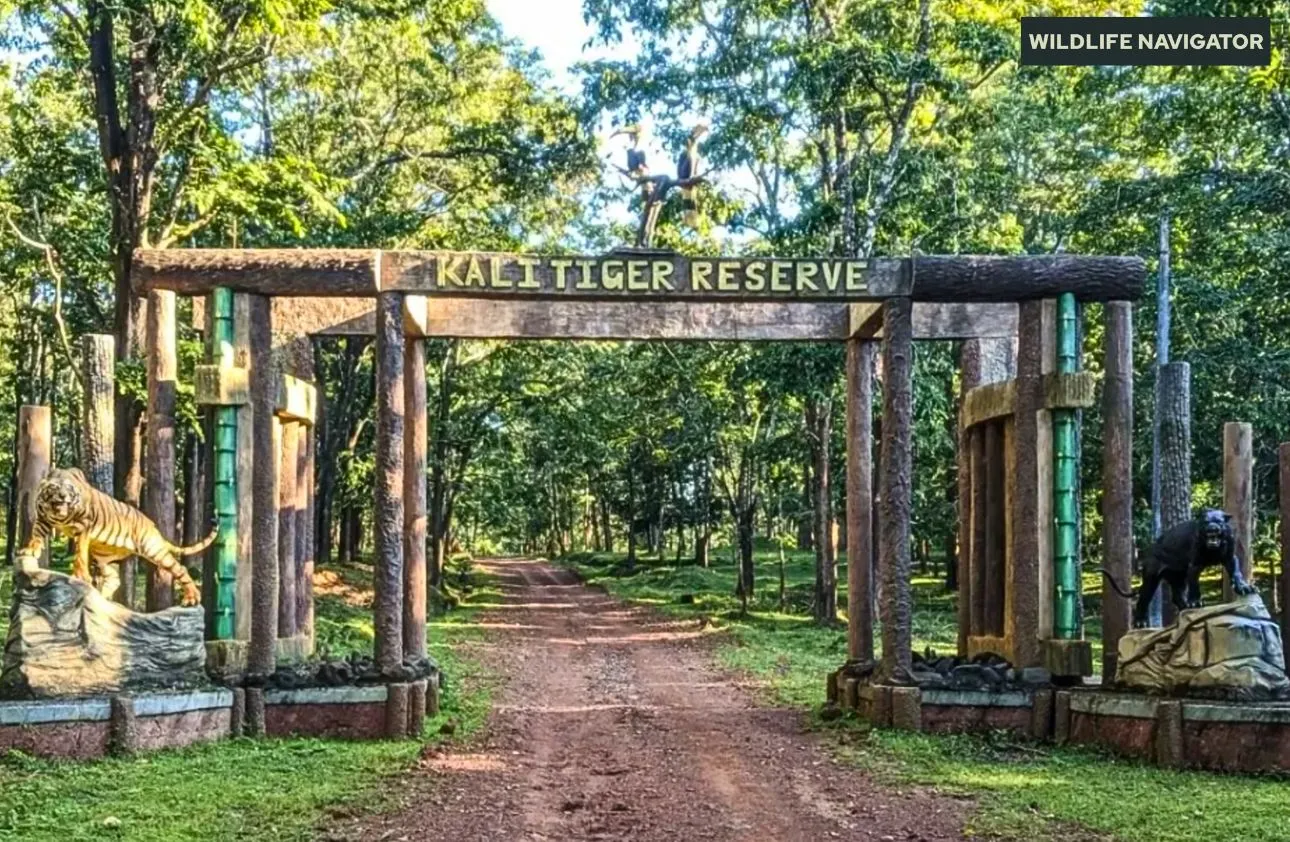
Kali Tiger Reserve, located in Uttara Kannada district, Karnataka, is one of India’s remarkable protected areas, holding the status of both a national park and a tiger reserve. Formerly known as Dandeli-Anshi Tiger Reserve, it was renamed in 2015 to highlight the ecological importance of the Kali River, which flows through the reserve. Spanning 1,345 km², it includes the Dandeli Wildlife Sanctuary (475 km²) and Anshi National Park (340 km²). These two protected areas form a contiguous tract of biologically sensitive forest in the Western Ghats, a biodiversity hotspot recognised by UNESCO. The reserve is renowned for its population of bengal tigers, elephants, leopards, and rare black panthers, as well as its dense forests, riverine landscapes, and abundant birdlife.
History and Background
The forests of Kali Tiger Reserve have a long conservation history. Initially, the area was declared Dandeli Wildlife Sanctuary in 1956, aimed at protecting its rich flora and fauna. Recognising the ecological significance of adjoining areas, the government proposed the creation of Anshi National Park in 1987, which was later formally extended in 2002 to cover additional forest lands. In 2007, Dandeli Wildlife Sanctuary and Anshi National Park were unified under the administrative banner of Dandeli-Anshi Tiger Reserve, providing a single framework for wildlife protection and habitat management.
The renaming to Kali Tiger Reserve in 2015 highlighted the crucial role of the Kali River, which sustains the reserve’s ecosystems and surrounding communities. The reserve’s governance structure includes a Chief Conservator of Forests, two sub-divisions (Dandeli and Anshi), and six wildlife ranges: Kulgi, Phansoli, Gund, Anshi, Kumbarwada, and Castlerock. Over the decades, the reserve has evolved into a model for tiger conservation, eco-tourism, and community involvement, balancing the needs of wildlife with sustainable visitor experiences.
Location and Geography
Where Kali Tiger Reserve is Located
Kali Tiger Reserve is situated in the Uttara Kannada district of Karnataka, India. Nestled in the heart of the Western Ghats, it forms a vital ecological corridor connecting several other protected areas and forest reserves in southern India. The reserve lies close to the towns of Dandeli and Anshi, which serve as gateways for visitors exploring this lush wilderness.
Area and Boundaries
Covering an impressive area of approximately 1,300 square kilometres, the reserve is one of the largest protected forest areas in the state. It comprises a mosaic of dense tropical and semi-evergreen forests, bamboo groves, and grasslands. The core and buffer zones are carefully managed to balance conservation and community needs, offering both sanctuary for wildlife and controlled access for eco-tourism.
The Kali River – Lifeline of the Reserve
The reserve derives its name from the Kali River, which flows majestically through its heart. Originating near Diggi village, the river winds through deep valleys and forested slopes before joining the Arabian Sea near Karwar. This river not only nourishes the park’s vegetation but also supports a thriving aquatic ecosystem and offers adventure sports like rafting, boating, and kayaking — making it a lifeline for both nature and tourism.
Landscape and Topography
The terrain of Kali Tiger Reserve is incredibly diverse, ranging from rolling hills and steep escarpments to riverine valleys and plateaus. The elevation varies between 27 meters and 1,200 meters, creating a variety of microhabitats that support rich biodiversity. The forest canopy is thick and often shrouded in mist, especially during monsoon, giving the reserve its mystical charm.
Climate
Kali Tiger Reserve experiences a tropical climate, with distinct monsoon, winter, and summer seasons. The monsoon (Jun to Sep) brings heavy rainfall, turning the forest into a lush green paradise. Winters (Nov to Feb) are cool and pleasant, making it the best time for safaris and bird watching. Summers (Mar to May) can be warm but are ideal for spotting animals near water sources.
Flora of Kali Tiger Reserve
The forests of Kali Tiger Reserve are a green wonderland, representing the rich biodiversity of the Western Ghats, one of the most biologically diverse regions in the world. Its lush vegetation forms the foundation of the ecosystem, supporting countless animal and bird species that thrive in its shelter.
Forest Types
Kali Tiger Reserve features a fascinating mix of evergreen, semi-evergreen, moist deciduous, and dry deciduous forests. The dense canopy of evergreen trees dominates the higher altitudes and river valleys, while the drier slopes and plateaus are covered with deciduous forests and bamboo brakes. The diversity of vegetation here is largely influenced by variations in rainfall, altitude, and soil composition.
- Evergreen forests: Found mainly in the Anshi range, these areas remain green throughout the year with tall, dense trees.
- Moist deciduous forests: Common in Dandeli and nearby regions, these forests shed leaves during summer and spring back to life during monsoon.
- Riverine forests: Found along the banks of the Kali River and its tributaries, supporting thick growth of grasses, reeds, and aquatic plants.
Notable Tree Species
Kali Tiger Reserve is home to a wide range of native and economically important tree species. Some of the most prominent include:
- Teak (Tectona grandis)
- Terminalia species such as Terminalia paniculata and Terminalia arjuna
- Bamboo and lantana groves across the buffer zones
- Cullenia exarillata, Hopea ponga, and Dipterocarpus indicus in the evergreen belts
- Rosewood (Dalbergia latifolia) and Eucalyptus in select areas
These trees not only enrich the landscape but also provide shelter and food for herbivores and nesting birds.
Medicinal and Endemic Plants
The forest is also rich in medicinal plants, many of which are used in traditional Ayurvedic and tribal medicine. Species like Rauvolfia serpentina, Gloriosa superba, and Aegle marmelos grow abundantly in the undergrowth. Several endemic species, found nowhere else in the world, flourish in this region thanks to its unique climate and soil.
Seasonal Transformation
Throughout the year, the vegetation of Kali Tiger Reserve undergoes stunning transformations. During monsoon, the forest turns emerald green, streams gush with water, and the air fills with the fragrance of wildflowers. In winter, the forest becomes quieter but equally charming, with mist-laden trees and sunlight filtering through the canopy.
The diversity and vitality of Kali’s flora make it not just a haven for wildlife, but also a living museum of plant life that highlights the ecological richness of the Western Ghats.
Fauna of Kali Tiger Reserve
The fauna of Kali Tiger Reserve is as diverse and mesmerising as its landscapes. This dense wilderness shelters an incredible variety of wildlife — from powerful predators to elusive birds and colourful butterflies. The reserve’s wide range of habitats, from evergreen forests to riverine belts, makes it one of the most biodiverse regions in southern India.
Mammals
Kali Tiger Reserve is home to an impressive array of mammals, including some of India’s most iconic and rare species.
- Tiger (Panthera tigris): The majestic tiger is the pride of this reserve, often sighted near water bodies and forest clearings.
- Black Panther: One of the most mysterious residents, the melanistic leopard or black panther, has made Kali famous among wildlife photographers and enthusiasts.
- Leopard (Panthera pardus): Sharing the tiger’s domain, leopards are frequently seen in the denser regions of the park.
- Indian Elephant: Large herds of elephants roam the valleys and grasslands, especially during the post-monsoon months.
- Gaur (Indian Bison), Sloth Bear, Wild Boar, and Sambar Deer are among the other key herbivores and omnivores.
- Smaller mammals like Malabar Giant Squirrel, Indian Pangolin, Civet, and Porcupine add to the diversity of this ecosystem.
Birds
With over 300 recorded bird species, Kali Tiger Reserve is a paradise for bird watchers. The thick canopy, rivers, and cliffs provide ideal nesting and feeding grounds.
- Iconic birds such as the Malabar Pied Hornbill, Great Indian Hornbill, and Blue-bearded Bee-eater are common sights.
- The Crested Serpent Eagle, Brahminy Kite, and Black Eagle dominate the skies.
- The reserve also attracts several migratory birds, including Kingfishers, Drongos, Minivets, and Paradise Flycatchers, making it a year-round delight for ornithologists.
Reptiles and Amphibians
The warm, moist environment of the Western Ghats provides a perfect habitat for reptiles and amphibians.
- The Indian Rock Python, King Cobra, and Russell’s Viper are notable reptilian inhabitants.
- The Marsh Crocodile and Monitor Lizard are often seen near the Kali River and its backwaters.
- Frogs like the Malabar Gliding Frog and Beddome’s Frog, found only in this region, add to the ecological uniqueness of the area.
Insects and Butterflies
The reserve’s vibrant undergrowth supports an astonishing variety of insects, including more than 100 species of butterflies.
- The Southern Birdwing, Blue Mormon, and Crimson Rose butterflies are some of the most eye-catching species.
- During monsoon, the forest comes alive with a dazzling display of colours as countless butterflies flutter across the trails.
From apex predators to delicate winged beauties, Kali Tiger Reserve’s fauna represents the wild heart of Karnataka — a living, breathing testament to India’s rich natural heritage.
Attractions and Activities
Kali Tiger Reserve is not just a sanctuary for wildlife but also a paradise for adventure seekers and nature lovers. The reserve offers a perfect blend of wilderness exploration, river adventures, and serene nature experiences — making it one of the most exciting destinations in Karnataka.
Jeep Safari and Wildlife Sightings
One of the best ways to explore Kali Tiger Reserve is through a jeep safari organised by the forest department. These guided safaris take visitors deep into the forest, offering a chance to spot tigers, black panthers, elephants, leopards, and various deer species in their natural habitat. Early mornings and late afternoons are considered the best times for sightings, as the forest buzzes with activity during these hours.
Bird Watching
For bird enthusiasts, Kali Tiger Reserve is nothing short of heaven. The dense canopy and riverine stretches attract hundreds of resident and migratory birds. Early morning walks or short drives around the Timber Depot, Ganeshgudi, and Kulgi Nature Camp are particularly rewarding. Don’t miss spotting the Malabar Pied Hornbill, Emerald Dove, Drongo, and Scarlet Minivet.
River Adventures on Kali River
The Kali River adds an adventurous edge to the reserve. Its steady currents and scenic beauty make it ideal for a range of water-based activities.
- White Water Rafting: A thrilling experience for those who love adventure — the rapids near Dandeli are among the best in South India.
- Boating and Kayaking: Ideal for beginners or those seeking a peaceful experience amidst nature.
- Crocodile Watching: Calm stretches of the river are great for spotting marsh crocodiles basking on the banks.
Trekking and Nature Trails
The forest department conducts guided trekking programs through selected zones of the reserve. Trekkers can explore scenic viewpoints, lush valleys, and pristine waterfalls hidden deep within the forest. Popular trails include routes around Syntheri Rocks, Sathodi Falls, and Kulgi-Nagzari.
Syntheri Rocks
Located within the reserve, Syntheri Rocks is a massive limestone monolith carved by the Kaneri River — a tributary of the Kali. The site features a 300-foot-tall rock formation surrounded by dense forest, attracting geologists, photographers, and tourists alike.
Eco-Tourism and Nature Camps
Kali Tiger Reserve promotes eco-friendly tourism through well-managed nature camps such as Kulgi, Kavala, and Anshi Nature Camp. These camps offer comfortable stays, guided safaris, birding tours, and nature education programs, making them ideal for families, students, and researchers.
Whether it’s the thrill of rafting through rapids, spotting a tiger in the wild, or waking up to the sound of hornbills, Kali Tiger Reserve promises an experience that reconnects you with the raw beauty of nature.
Best Time to Visit
Kali Tiger Reserve can be visited throughout the year, but the experience varies beautifully with each season. The reserve’s tropical climate, coupled with its location in the Western Ghats, ensures that every visit brings a different shade of wilderness — from misty monsoons to vibrant winters and sun-dappled summers.
Winter (November to February) – The Ideal Season
Winter is considered the best time to visit Kali Tiger Reserve. The weather remains cool and pleasant, ranging between 15°C and 28°C, creating perfect conditions for safaris, bird watching, and trekking.
- The forest is lush green after the monsoon, with clear skies and active wildlife.
- This season also attracts a large number of migratory birds, making it ideal for birding enthusiasts.
- River activities like boating and rafting are safe and enjoyable during these months.
Summer (March to May) – Great for Wildlife Sightings
The summer months bring warmer temperatures, often ranging between 25°C and 35°C, but the reduced foliage improves visibility, making it easier to spot animals near waterholes and rivers.
- Tigers, elephants, and gaurs are more frequently seen during early morning or late evening safaris.
- While the days can be warm, the forest canopy offers plenty of shade.
- This season is also good for river rafting as water levels remain moderate.
Monsoon (June to September) – Lush and Magical
Monsoon transforms Kali Tiger Reserve into a mystical paradise. The forest turns a deep green, rivers swell with rainwater, and waterfalls come alive with full force. However, heavy rains may restrict safaris and treks during this time.
- The reserve looks its most beautiful, with misty hills and gushing streams.
- Perfect for nature lovers and photographers who enjoy the charm of rain-drenched forests.
- Some parts of the reserve may be temporarily closed for safety reasons, so it’s best to check ahead with the forest authorities.
How to Reach
Reaching Kali Tiger Reserve is quite convenient, thanks to its location in the Uttara Kannada district of Karnataka, close to major cities like Dandeli, Hubli, Karwar, and even Goa. The reserve is well-connected by road, rail, and air, making it accessible for both domestic and international travellers.
By Air
The nearest airport to Kali Tiger Reserve is Hubli Airport, located about 80 km away. It has regular flights from major Indian cities like Bengaluru, Mumbai, and Hyderabad. From Hubli, visitors can hire a taxi or take a bus to Dandeli, the main entry point to the reserve.
- Alternative Airports:
- Goa International Airport (Dabolim) – about 150 km away, ideal for those combining a beach and wildlife trip.
- Belagavi Airport – around 110 km from Dandeli, with limited but growing connectivity.
By Rail
The nearest railway stations to Kali Tiger Reserve are:
- Alnavar Junction (32 km) – the closest and most convenient railhead.
- Londa Junction (48 km) – another well-connected station serving trains from Bengaluru, Goa, and Mumbai.
- Hubli Junction (80 km) – a major railway hub for those arriving from other parts of India.
From any of these stations, taxis, jeeps, or local buses are easily available to reach the reserve or nearby towns like Dandeli and Kulgi.
By Road
Kali Tiger Reserve is well connected by a network of scenic highways and forest roads.
- From Dandeli: The main gateway, about 20 km from the reserve’s entry zone.
- From Hubli: 80 km via Haliyal – approximately 2 hours by road.
- From Goa: 150 km via Karwar – about 4 to 5 hours, offering stunning coastal and forest views.
- From Bengaluru: 480 km – roughly 8 to 9 hours of drive through lush Ghats and countryside roads.
State transport buses and private operators also run regular services from Bengaluru, Dharwad, Karwar, and Belagavi to Dandeli and Haliyal.
Local Transport and Entry Points
Once in Dandeli or Anshi, visitors can access the reserve through designated entry gates managed by the Karnataka Forest Department. Local guides and authorised vehicles are mandatory for safaris and trekking routes. The forest department’s nature camps, such as Kulgi Nature Camp and Kavala Camp, also assist with entry passes and guided tours.
Accommodation Options
Kali Tiger Reserve offers a range of accommodation options that cater to all kinds of travellers — from nature enthusiasts and wildlife photographers to families and adventure seekers. Whether you prefer staying in the heart of the forest or in the nearby town of Dandeli, there are several eco-friendly lodges, nature camps, and resorts to choose from.
1. Forest Department Nature Camps
The Karnataka Forest Department manages a few nature camps and eco-lodges inside and around the reserve. These government-run facilities are ideal for those who want to stay close to nature while enjoying basic comfort and guided experiences.
- Kulgi Nature Camp: Located inside the forest, this is the most popular stay option for tourists. It offers log huts, dormitories, and tents, along with guided safaris, birding walks, and nature education programs.
- Kavala Caves Camp: Known for its proximity to the famous Kavala limestone caves, this camp offers rustic cottages and guided treks through scenic forest trails.
- Anshi Nature Camp: Nestled in the deeper part of the reserve, it provides a peaceful forest stay surrounded by evergreen trees — perfect for those seeking solitude and serenity.
2. Eco-Resorts and Lodges in Dandeli
Dandeli, located near the reserve, has a wide selection of private eco-resorts and jungle lodges that combine comfort with adventure.
- Kali Adventure Camp (Jungle Lodges & Resorts): A premium property run by Jungle Lodges & Resorts, offering river-view cottages, delicious local cuisine, and adventure sports like rafting and kayaking.
- Bison River Resort: Overlooking the Kali River, this resort provides well-furnished rooms, guided safaris, and riverside bonfire experiences.
- Whistling Woods and Hornbill River Resort: Popular for their scenic locations, eco-friendly architecture, and birding tours.
These resorts are great for families or couples looking for a mix of comfort and wildlife adventure.
3. Budget and Homestay Options
For budget travellers or backpackers, Dandeli town and nearby villages have several homestays and guesthouses run by local families. These offer clean, affordable rooms and a chance to experience the warm hospitality of the region. Many hosts also organize nature walks, village tours, and traditional meals for guests.
4. Camping and Adventure Stays
If you’re looking for something offbeat, several operators around Dandeli offer camping experiences along the riverbank or in the buffer zone. Tented stays, bonfires under the stars, and night safaris create the perfect blend of thrill and tranquility.
From luxury lodges overlooking the Kali River to cozy forest huts surrounded by chirping birds, the accommodation options around Kali Tiger Reserve ensure that every visitor finds a perfect stay amidst nature.
Conservation Efforts
Kali Tiger Reserve stands as a living example of how conservation, community participation, and sustainable tourism can work hand in hand. Its story is not just about protecting wildlife but also about preserving one of the last remaining tracts of pristine forest in the Western Ghats — an area vital for ecological balance, water security, and biodiversity.
1. Project Tiger and Habitat Management
After being declared a tiger reserve in 2015, Kali came under the umbrella of Project Tiger, India’s flagship initiative for big cat conservation. This brought in stricter protection measures, scientific monitoring, and habitat management programs.
- The forest department regularly conducts camera trapping, prey base assessments, and patrolling to track tiger populations and reduce poaching threats.
- Efforts are made to maintain natural waterholes, restore degraded areas, and control forest fires, ensuring that both prey and predator species thrive.
- Anti-poaching camps and watchtowers have been established in key zones to ensure round-the-clock protection.
2. Protecting Biodiversity Beyond Tigers
While the tiger is the flagship species, conservation efforts in Kali also focus on protecting the entire ecosystem — from elephants and leopards to reptiles, amphibians, and rare plant species. The reserve serves as a crucial corridor connecting wildlife habitats of Goa, Maharashtra, and other parts of Karnataka, allowing genetic diversity to flourish across the landscape.
3. Community Involvement and Eco-Tourism
Local communities living around the reserve play a significant role in conservation. The forest department has launched several eco-development programs that provide alternative livelihoods to reduce dependence on forest resources.
- Villagers are trained as nature guides, safari drivers, and eco-camp staff, turning tourism into a source of income and pride.
- Women-led self-help groups (SHGs) make and sell handicrafts, local honey, and organic products to visitors.
- Eco-tourism initiatives such as Kulgi Nature Camp and Kali Adventure Camp create awareness among visitors about the importance of protecting this fragile ecosystem.
4. Challenges in Conservation
Despite strong efforts, the reserve faces ongoing challenges that require constant attention:
- Human-wildlife conflict, particularly crop raids by elephants and livestock predation by leopards.
- Deforestation and encroachment in buffer zones due to agricultural expansion and infrastructure projects.
- Poaching and illegal fishing in certain river stretches, threatening aquatic life.
- Balancing tourism development with the need to maintain ecological integrity.
5. The Way Forward
To ensure the long-term survival of this ecosystem, authorities are now focusing on scientific habitat restoration, better coordination between forest divisions, and awareness programs among locals and tourists. Continuous collaboration between the Karnataka Forest Department, NGOs, and conservation researchers has helped make Kali one of India’s most resilient tiger reserves.
Travel Tips for Visitors
Before heading to Kali Tiger Reserve, it’s helpful to plan your trip with a few essentials in mind. The reserve promotes responsible and eco-friendly tourism, so visitors are encouraged to respect nature while exploring its beauty.
Travel Tips:
- Permits: Obtain entry and safari permits from the Karnataka Forest Department or authorised nature camps like Kulgi or Anshi.
- Best Time: Visit between November and April for pleasant weather and better wildlife sightings.
- What to Carry: Binoculars, camera, comfortable footwear, insect repellent, and light cotton clothes.
- Safety: Follow guide instructions during safaris; avoid loud noises or flash photography.
- Eco-Etiquette: Do not litter, feed animals, or pluck plants — keep the forest pristine.
A well-prepared visit ensures a safe, memorable, and responsible experience in the wild heart of Karnataka.
Conclusion
Kali Tiger Reserve is a biodiversity hotspot and a perfect destination for wildlife enthusiasts, bird watchers, adventure seekers, and eco-tourists. From majestic tigers and elephants to rare black panthers and hornbills, every visit offers a chance to connect with nature.
The reserve demonstrates the importance of conservation, eco-tourism, and community participation in protecting delicate ecosystems. By exploring responsibly, visitors help ensure that this Western Ghats treasure continues to thrive for generations to come.
